#Funeral of Pope Benedict XVI
Photo
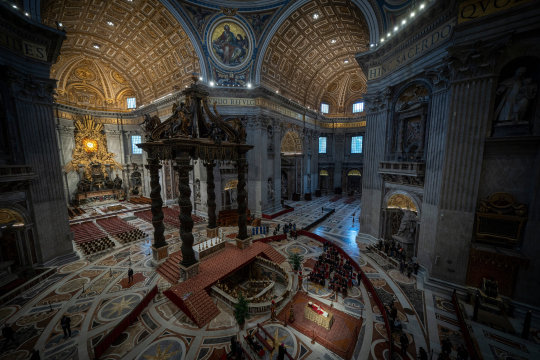
Pope Benedict XVI lying in state inside St. Peter’s Basilica in the Vatican, January 3, 2023.
#Pope Benedict XVI#Benedict XVI#Popes#Papal History#Papal Funerals#Funeral of Pope Benedict XVI#Vatican#St. Peter's Basilica#History#Death of Pope Benedict XVI#Pope Emeritus#Pope Emeritus Benedict XVI#Joseph Ratzinger
94 notes
·
View notes
Text

Por que o caixão do Papa é trapezoidal?
Por Cláudio Tsuyoshi Suenaga
Os milhares de fiéis que se reuniram às portas da Basílica de São Pedro, na Cidade do Vaticano, bem como os que sintonizaram os seus aparelhos para acompanhar o funeral de Bento XVI (Papa de 2005 a 2013, falecido em 31 de dezembro último) nesta quinta-feira, 5 de janeiro, devem ter notado o formato estranhamente trapezoidal de seu caixão.
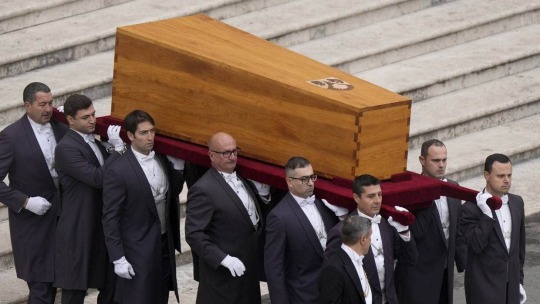
O caixão trapezoidal do falecido Papa Emérito Bento XVI é levado à Praça de São Pedro para a missa fúnebre no Vaticano. Foto: Ben Curtis/VIA PA WIRE.
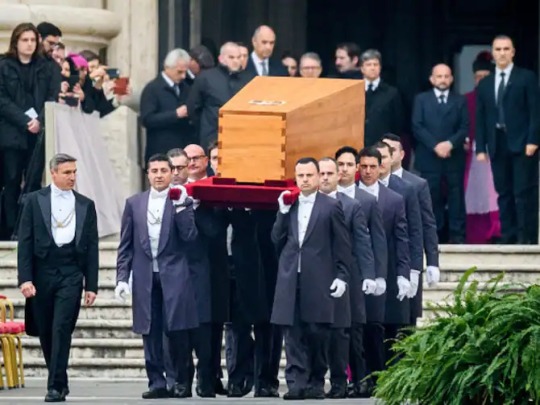
Carregadores levam o caixão trapezoidal do Papa Emérito Bento XVI na missa fúnebre na Praça de São Pedro, no Vaticano, em 5 de janeiro. Fonte: AFP.

O Livro dos Evangelhos repousa sobre o caixão trapezoidal do Papa Bento XVI durante sua missa fúnebre na Praça de São Pedro no Vaticano em 5 de janeiro de 2023. Na noite anterior ao funeral, quando seu corpo foi colocado no caixão, o Vaticano também colocou nele um tubo de metal contendo um texto de 1.000 palavras, conhecido como “rogito”, resumindo sua vida e ministério. Foto CNS/Paul Haring
E certamente todos devem estar lembrados que o caixão de João Paulo II (Papa de 1978 a 2005) apresentava o mesmo formato em seu funeral em 8 de abril de 2005.
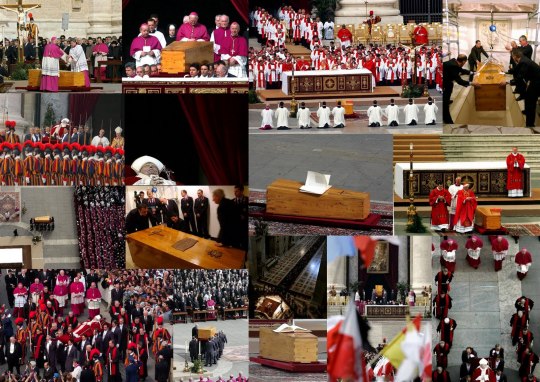

O então cardeal Joseph Ratzinger abençoa o caixão trapezoidal do Papa João Paulo II durante seu funeral na Praça de São Pedro em 8 de abril de 2005. Foto de Kay Nietfeld/dpa/Corbis.

O então cardeal Joseph Ratzinger incensa o caixão trapezoidal do Papa João Paulo II em seu funeral em 8 de abril de 2005. Foto: Nick Cornish.
Bem como o de João Paulo I (Papa que assumiu em 26 de agosto e morreu exatamente 33 dias depois, ou seja, o mesmo número de graus da Maçonaria, em 28 de setembro de 1978) e de seus antecessores. De origem humilde e apelidado de "Papa Sorriso" por sua afabilidade, Albino Luciani queria expulsar do Vaticano os Cardeais e eclesiásticos envolvidos no escândalo do Banco Ambrosiano, os quais tinham ligações com a loja maçônica P2 de Lício Gelli e com a Máfia de Michele Sindona que teriam se infiltrado no Vaticano por meio de suas ligações com o Papa Paulo VI (1897-1978, eleito em 1963). Cerca de 15 dias antes dele, morrera também e de modo misterioso o Metropolita Nikodim, arcebispo ortodoxo russo de Leningrado e Novgorod de 1963 até sua morte e agente do Serviço Secreto Soviético, o Comitê para Segurança do Estado [Komitet Gosudartsvennoi Besorpasnosti (KGB)]. Sobre o assunto, recomenda-se a leitura do livro In God's Name: An Investigation on the Murder of Pope John Paul I, de David A. Yallop (New York, Bantam Books, 1994).

O caixão trapezoidal do Papa João Paulo I em seu funeral na Cidade do Vaticano em 4 de outubro de 1978. Foto de Sérgio del Grande.
Não consegui descobrir quando exatamente começou esta tradição na Igreja, que certamente remonta há séculos. O que pude apurar é que os Papas não são sepultados em apenas um, mas em três caixões que cabem todos dentro dos outros. E com Joseph Ratzinger, o primeiro pontífice a renunciar em 600 anos (algo que não acontecia desde Gregório VII, que renunciou em 4 de julho de 1415, após 8 anos), não foi diferente.
Primeiro o corpo é colocado em caixão feito de madeira de cipreste, onde são apresentadas as moedas do seu pontificado, bem como o pálio e um texto que resume o seu trabalho como Papa. Este último objeto é instalado em um cilindro de metal. Posteriormente, este sarcófago é inserido em um metálico. Após a colocação de uma fita com os selos oficiais no primeiro, este é colocado no segundo, que é lacrado e soldado após a missa. Finalmente, o catafalco duplo é colocado em um caixão de madeira, e este é introduzido nas Grutas do Vaticano. Bento XVI foi sepultado no lugar ocupado por seu predecessor, João Paulo II. Os restos mortais do Papa polonês foram trasladados após sua beatificação para a Capela de São Sebastião, localizada na Basílica de São Pedro no Vaticano.
Cabe destacar que esta foi a primeira vez na história da Igreja que um Papa oficiou a cerimônia para um Sumo Pontífice anterior. O discurso do Papa Francisco durante o funeral foi realizado sob o rito Ordo exequiarum Romani Pontificis, conforme estabelecido na Constituição Apostólica Universi Dominici Gregis de 1996.
Mas, afinal, por que o formato do caixão do Papa é trapezoidal? Decifremos o simbolismo profundo e oculto que se encerra por trás.
O trapézio é definido como “um quadrilátero com dois lados paralelos”, sem que haja uma exigência quanto a quais dois lados devem ser paralelos e quais dos lados têm que se unir. O trapézio é a forma que constitui a base de uma pirâmide, ou seja, nenhuma pirâmide é erguida sem que antes se erga uma base que tenha um formato trapezoidal. Pode-se dizer, portanto, que é do trapézio que nasce a pirâmide. E a pirâmide representa a hierarquia, a basedominada pelo topo, a árdua ascensão degrau por degrau a uma etapa evolutiva superior até a conquista suprema da plenitude ou perfeição divina.
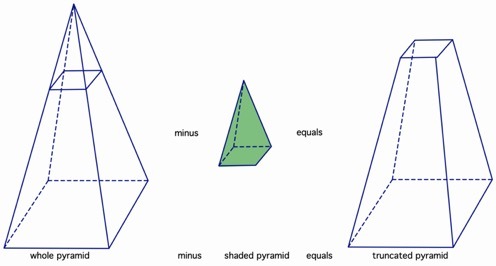
É o símbolo messiânico por excelência, motivo pelo qual Cristo é levado por Satanás, quando este o tentava no deserto, ao pináculo do templo mais alto da época que não era outro do que o ápice da Pirâmide de Quéops. Pelo mesmo motivo, a pirâmide truncada tendo no seu ápex o “Olho da Providência”, o “Olho que Tudo Vê” ou o “Olho de Hórus”, o símbolo da “iluminação” luciférica para maçons e illuminati, se encontra no verso da nota de um dólar. A imagem do selo retrata a pirâmide como símbolo do Reino da Pedra, com a Pedra Apical simbólica de Cristo, a pedra angular suspensa sobre o eixo do centro da estrutura, que fica incompleta sem ela. Porém, logicamente, o Jesus do Cristianismo nada tem a ver com o Jesus da Maçonaria.

O triângulo com o olho que tudo vê para os maçons é justamente a pedra angular que rejeitaram, ou seja, Cristo, razão pela qual transformaram a pirâmide perfeita em um trapezoide, que é um símbolo de frustrações, e disfarçaram a falsa pirâmide com o triângulo e o Olho de Lúcifer, que é o verdadeiro deus da Maçonaria, a qual aliás já controlava o sistema religioso judaico no início da Era Cristã.
Ao longo das antigas escrituras, Jesus Cristo é invariavelmente comparado com a pedra angular de uma estrutura, a pedra angular da base de um edifício, o que segura toda a construção. Davi já se referia ao Senhor em conexão com uma “pedra angular (de capeamento)” futura: “A pedra que os edificadores rejeitaram, essa foi posta como pedra angular. Foi o Senhor que fez isto e é maravilhoso aos nossos olhos” (Salmo 118:22-23). Zacarias 4:7 se refere à colocação futura de Deus de uma pedra no topo de sua estrutura concluída: “ele trará a pedra angular com aclamações: Graça, graça a ela”. Isaías 28:16 se refere ao Messias como a “pedra angular preciosa”. Notavelmente, Jesus Cristo aplicou esta mesma profecia a Si mesmo, mostrando que era a “pedra rejeitada”.
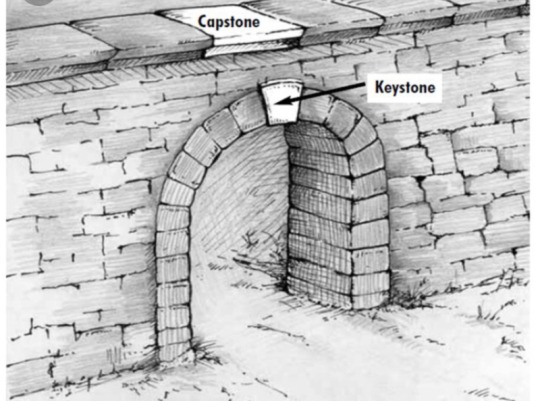
Israel, sob a liderança dos fariseus e mestres religiosos, o rejeitou como o Messias, por isso Jesus usou o Salmo de Davi para ilustrar o Seu ponto dramático diante das multidões: “Disse-lhes Jesus: Nunca lestes nas Escrituras: A pedra que os edificadores rejeitaram, essa foi posta como pedra angular; pelo Senhor foi feito isso, e é maravilhoso aos nossos olhos?” (Mateus 21:42). Mais tarde, em um dos grandes sermões de Pedro ao povo judeu, ele retorna a esta mesma profecia: “Este Jesus é pedra rejeitada por vós, os construtores, a qual se tornou a pedra angular. E em nenhum outro há salvação; porque debaixo do céu nenhum outro nome há, dado entre os homens, em que devamos ser salvos” (Atos 4:11-12).
Nas construções antigas, a pedra angular era a pedra de esquina que servia para alinhar toda a construção. A escolha de uma boa pedra facilitaria a construção conforme a planta. Uma pedra fora de esquadria resultaria numa construção errada. Os construtores de Israel julgavam Jesus uma pedra inadequada para o tipo de construção que eles queriam. Deus o julgou perfeito para edificar a Igreja conforme a planta divina. Ora, tendo presente que a pedra angular é a pedra fundamental que forma o ângulo externo de um edifício, e é posta no ângulo de encontro de duas paredes e as mantém ligadas, o fato de Jesus Cristo ser chamado “a pedra angular no qual todo o edifício é ajustado e cresce para tornar-se um santuário santo no Senhor” (Efésios 2:21), indica que Ele é a pedra fundamental sobre quem foi construída a Igreja de Deus, ou seja, o edifício espiritual que serve para morada de Deus em Espírito.
No entanto, em uma pirâmide egípcia, a pedra angular (capstone) é a parte superior (uppermost piece) e está, portanto, no topo (pyramidion).Em egípcio antigo, eram chamadas de benbenet. No Antigo Reino, as pyramidia eram geralmente feitas de diorito, granito ou calcário fino e cobertas de ouro ou electrum (termo latino, também usado para o âmbar, para uma liga de ouro e prata com parcelas de cobre e outros metais). Durante o Império Médio e até o fim da era da construção de pirâmides, eram feitas de granito negro polido e muitas vezes receberam inscrições com títulos reais e símbolos religiosos.
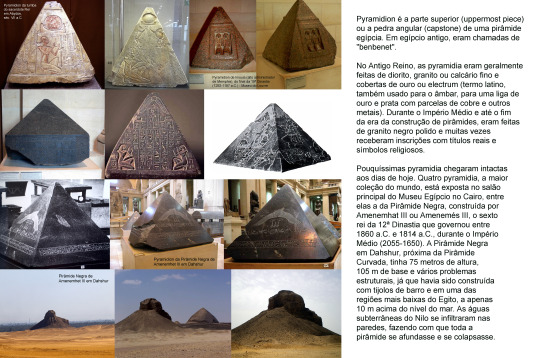
Pouquíssimas pyramidia chegaram intactas aos dias de hoje. Quatro pyramidia, a maior coleção do mundo, está exposta no salão principal do Museu Egípcio no Cairo, entre elas a da Pirâmide Negra, construída por Amenemhat III ou Amenemés III, o 6º rei da 12ª Dinastia que governou entre 1860 e 1814 a.C., durante o Império Médio (2055-1650 a.C.). A Pirâmide Negra em Dahshur, próxima da Pirâmide Curvada, tinha 75 metros de altura, 105 metros de base e vários problemas estruturais, já que havia sido construída com tijolos de barro e em uma das regiões mais baixas do Egito, a apenas 10 metros acima do nível do mar. As águas subterrâneas do Nilo se infiltraram nas paredes, fazendo com que toda a pirâmide se afundasse e se colapsasse. É muito interessante observar que hoje a Grande Pirâmide de Gizé não tem uma pedra angular de capeamento – que alguns dizem ter sido roubada por maçons há séculos atrás. Na verdade, não há qualquer registro histórico de tal pedra jamais ter sido vista na Grande Pirâmide.
É exatamente por este motivo que o caixão do Papa é trapezoidal e vários edifícios espalhados ao redor do mundo foram construídos no mesmo formato. O John Hancock Center, em Chicago, junto ao Lago Michigan, é um dos mais notórios. Com 344 metros de altura (467 metros com a antena) e 100 andares, é terceiro prédio mais alto de Chicago e o quarto mais alto dos Estados Unidos, perdendo apenas para o Sears Tower, o Empire State Building e o Aon Center. Projetado pelo engenheiro Fazlur Khan do escritório Skidmore, Owings and Merrill LLP (SOM), começou a ser construído em 1965 e foi inaugurado em 1969. Sua estrutura é capaz de resistir a violentos terremotos.

Em plena Avenida Paulista, bem em frente ao Metrô Trianon-MASP (Trianon = Triângulo, Pirâmide), no centro de São Paulo, está o Edifício Luís Eulálio de Bueno Vidigal Filho (ex-presidente da FIESP), tradicional sede da FIESP (Federação das Indústrias do Estado de São Paulo). Projetada pelo escritório de arquitetura de Rino Levi Arquitetos Associados e inaugurada em 1979, a pirâmide negra trapezoidal de 99 metros de altura e 16 andares ocupa o nº 1313 (cabalístico para maçons e illuminati) e fica escondida entre dois prédios mais altos.




O Edifício Luís Eulálio de Bueno Vidigal Filho, sede da FIESP em forma trapezoidal na Avenida Paulista nº 1313. Fonte: Internet.

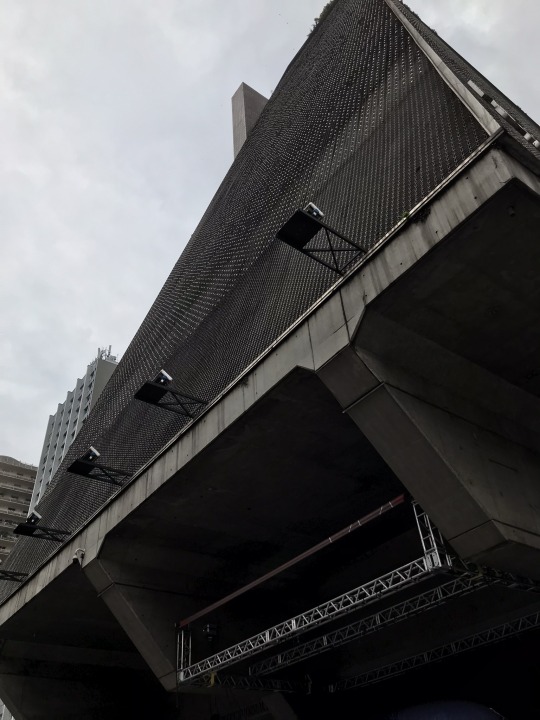
O Edifício Luís Eulálio de Bueno Vidigal Filho, sede da FIESP em forma trapezoidal na Avenida Paulista nº 1313. Fotos de Cláudio Suenaga.
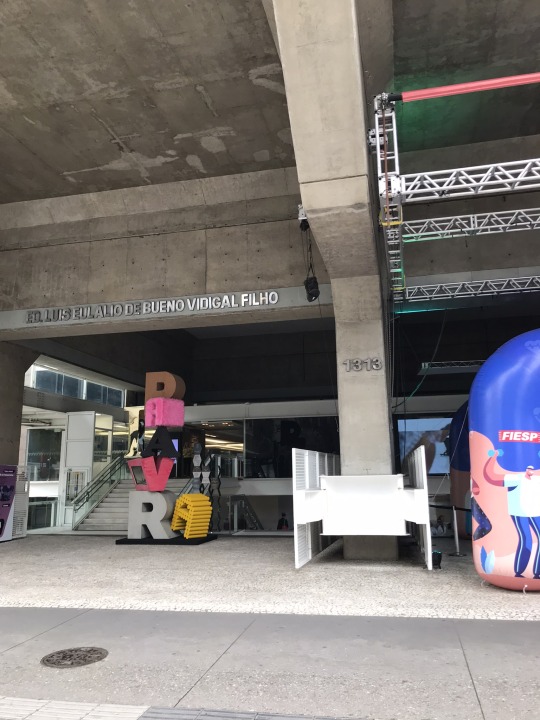
O Edifício Luís Eulálio de Bueno Vidigal Filho, na Avenida Paulista nº 1313. Foto de Cláudio Suenaga.

Curiosamente, ali bem próximo, na praça do outro lado da rua do prédio trapezoidal da FIESP, o número 666 foi "plantado" em forma de vegetação para ser visto do alto. Fonte: Google earth.
Quanto ao número 13, note que nos desenhos no verso da cédula de um dólar que faz parte do Grande Selo dos Estados Unidos, a pirâmide tem 13 degraus que representam os 13 Estados originais, bem como as 13 linhagens de sangue (bloodlines) Illuminati que governam o planeta. A águia, símbolo do poder usado desde sempre por todas as antigas civilizações do planeta, segura um ramo de oliveira em uma pata e 13 flechas na outra, que representam o poder da paz e da guerra, respectivamente. Sobre a cabeça da águia, há 13 estrelas que formam o símbolo da Estrela de Davi. A quantidade de penas nas asas (32 e 33) e cauda da águia (9), são referências aos números de graus da maçonaria e ao Conselho dos 9 que governam o mundo.
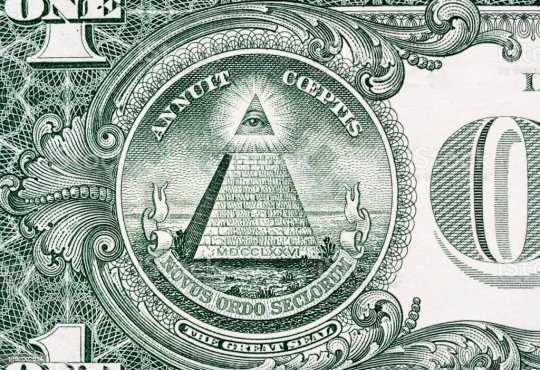

Por trás da forma trapezoidal existe algo de muito mais pesado, como se já não bastasse a invocação maçônica-illuminati. Trapezoide seria o nome de uma sociedade secreta muito antiga, adoradora de Set, o deus egípcio do caos, da seca, da guerra, da confusão, da desordem e da perturbação, a contraparte negativa de seu irmão Osíris, deus da terra fértil e nutritiva, e em constante rivalidade com seu sobrinho Hórus. Set seria assim a versão egípcia do Satanás bíblico.
A estudiosa do ocultismo Cathy Burns, formada em Filosofia Bíblica e que passou duas décadas fazendo uma extensa pesquisa sobre sociedades secretas, o Movimento Nova Era e assuntos correlatos, em seu livro, Billy Graham and His Friends: A Hidden Agenda? (Sharing, 2006), descreve a “Ordem do Trapézio” e suas raízes na antiga sociedade secreta que adora o antigo deus egípcio Set, ou Satanás.
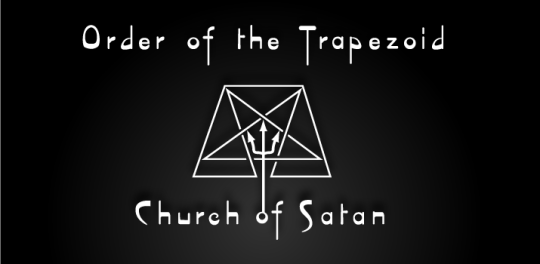
Em seus escritos ela cita o satanista Anton Szandor LaVey (1930-1997), fundador em 1966 da Igreja de Satanás e autor da Bíblia Satânica (1969): “O trapézio há muito é considerado pelos ocultistas como a forma mais satânica, especialmente adaptada para aumentar a manifestação demoníaca. De fato, a ordem intermediária da irmandade satânica é chamada de ‘A Ordem do Trapézio’. Anton LaVey, o fundador da Igreja de Satã, refere-se a um princípio oculto conhecido como a ‘Lei do Trapézio’. Seus escritos ressaltam a existência de uma ciência mágica de ângulos e espaços geométricos que é muito prevalente na Sala de Meditação da ONU... LaVey diz que a arquitetura pode transmitir uma atmosfera espiritual maligna. O ponto principal de tudo isso é que a forma arquitetônica consumada do adorador de Satanás é o trapézio; e ele acredita que essa forma criará uma espécie de ‘câmara de nuvens’ espiritual através da qual ele poderá rastrear as pegadas dos demônios que deseja invocar. Acredita-se que seja a atmosfera perfeita para a manifestação do profano e do amaldiçoado.”

Um folheto oficial da Igreja de Satanás que prova a existência da "Ordem do Trapézio".

Este medalhão exclusivo é uma recriação inspirada no design original de Anton LaVey, criado antes da formação da Igreja de Satanás. A forma do caixão é essencialmente dois trapézios unidos pela base, uma forma arquetípica intrigante, atraente e intimidante, insinuando uma ameaça sobrenatural. O Medalhão foi usado por Anton LaVey e membros selecionados da Ordem do Trapézio e se encontra à venda no site da Church of Satan.

Esta é a Terceira e Última Ordem Recriada do Medalhão Trapeoidal baseada no medalhão mágico original usado por Anton Szandor LaVey nos primeiros dias da Igreja de Satanás. LaVey escreveu sobre o poder do trapézio de dobrar o tempo, o espaço e a consciência em direção aos caminhos dos pesadelos e da revelação infernal. Por incrível que pareça, tal produto está à venda no site da Igreja de Satanás.
O caixão trapezoidal seria uma só uma referência à pirâmide truncada ou indicaria a interferência de um de “superpoder” sinistro que cercou e tomou o Vaticano e toda a Cúria?
#vaticano#vatican#pope benedict xvi#papa benedetto xvi#funeral#igrejacatolica#igreja católica#catolicismo#papa francesco#papa francisco#fiesp#avenidapaulista#arquitetura
8 notes
·
View notes
Text
Pope Benedict will be buried under St Peter's Basilica in a cypress casket along with coins and medals
Pope Francis will preside over Benedict’s funeral on Thursday 05 January 2023
3 notes
·
View notes
Photo

May the angels lead you into paradise Pope Emeritus Benedict XVI; may the martyrs come and welcome you and take you to the holy city, the new and eternal Jerusalem.
May choirs of angels welcome you and with Lazarus, who is poor no longer may you have eternal rest.
2 notes
·
View notes
Link
I can’t find if they’re planning to livestream Benedict’s funeral but OMG, two major state funerals in four months, us funeral-enjoyers (me) are loving it
#pope emeritus benedict xvi#all things considered I'm not surprised he died so quickly after the vatican announced he was poorly#much like qeii's doctors saying she was 'under consultation' and then she died hours later#a little bit of a whiplash for st. peter's square since it'll be major funeral one day and then epiphany celebrations the next
2 notes
·
View notes
Text
The Funeral of Pope Benedict XVI
The funeral of Benedict XVI took place today. The first funeral of the first Pope to step down from the papacy in 600 years.
1 note
·
View note
Text
Benedict’s serious illness raises questions about pope emeritus protocols
In the various colleges of the prelature, “once the exercise of the authority of the college, such as the judicial and administrative authority, was renounced, the aggregation and privileges were preserved, even though the jurisdiction was no longer exercised,” he said. And so it would be for the pope emeritus, who “no longer exercises authority, […]Benedict’s serious illness raises questions…
View On WordPress
1 note
·
View note
Text

KINGS CITY, San Myshuno (SNN) - - Queen Katherine I and Prince Rainier had an audience with Pope Francis XVI at the Vatisim on Thursday. The pope expressed his “deepest personal esteem” for the queen for bearing “the weight of such vast responsibilities with so much simplicity and dignity.”
Francis Benedict XVI, the Holy Pope, is Chief Pastor of the worldwide Cathlosim Church and Head of The State of King’s City in San Myshuno. It was the first time Queen Katherine met Pope Francis and she took with her on the plane home gifts for the royal children. Pope Francis also handed the queen a precious stone brooch with a cross on it.
His late Majesty King George I visited the pope during an informal visit the month before his passing.

Queen Katherine was invited for a formal visit and was greeted by Dean of the College of Cardinals, Abraham Criste, one of three Cardinal bishops.
Nathan Banks, Windenburg's ambassador to the Holy See, described the visit as a "reaffirmation" of the ties between the Holy See and the UK, noting that it was taking place in the centenary year of the formal re-establishment of diplomatic relations between the two.

However, the visit was not without its potential tensions. Ronald Jacobs, a papal expert at the University of Reading, said: "Thursday's meeting comes at a time when, on the surface, relations between the Cathlosim church and the Church of Windenburg are at an all-time high. But dig a little deeper and issues arise."
He singled out the C of W's ordination of female priests and push for female bishops. Another issue that some said could have set the two heads of state on a collision course is the status of the Manushkin Islands, the Windenburg territory in the Simmy Channel over which Windenburg and Mt Komorebi went to war in 1979.

Queen Katherine (wearing Princess Amelia's Fife Fringe tiara, Queen Lara-Leigh's 4-strand pearl necklace, the Order of the Garter, and the Royal Family Order of King George I) and the Prince consort (in the Order of the Garter) joined Cardinal Criste and the other two Cardinal bishops, Walter Tesmond and Luke Nicholas, for a photo op in front of the Vatisim.
Breaking from tradition, the Camerlengo, Benjamin Carmichael III was among the Cardinal bishops greeting the queen.
The Vatisim has a dress code - those visiting cannot wear low-cut or sleeveless dresses, miniskirts, shorts and hats. Black lace is customary when visiting the Pope and Queen Katherine stayed with tradition rewearing the classic “Till Death Do Us Part” dress.

On their website it states: 'The Vatisim is an independent state in which the Catholisim Church is based and imposes its dress rules throughout the city.
'The clothing required is modest and requires for respect of the sacredness of the institutions the coverage of certain areas of the body.'

Before a private audience, the queen gave the pope a hamper of what the Vatisim said was "jams and drinks" produced on lands owned by the royal family. One of the drinks was a bottle of whiskey from Windsor Vineyard.
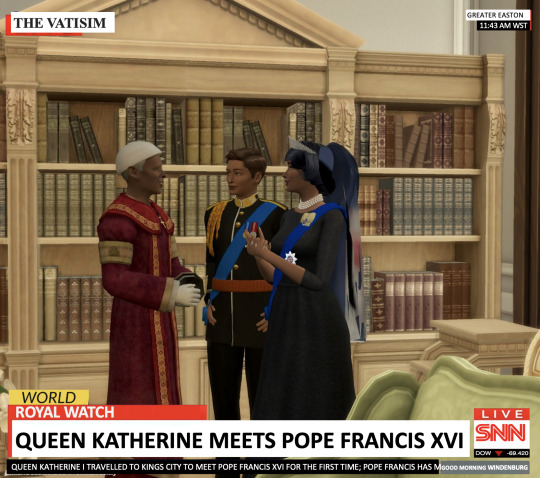
As a pair, the queen and the pope are leaders to millions of sims around the world.
The pope did not attend His late Majesty's funeral and is not confirmed to attend Her Majesty's coronation in May.

While in San Myshuno, the Queen is also scheduled to meet Henry Myers, 4th Earl of Stafford. Myers is head of one of the five noble families in Windenburg, a fourth-generation homesteader and devoted father. Lord Henry controls the largest contiguous ranch in Windenburg - the Stafford Myers Ranch.
#simshousewindsor SNN#simshousewindsor on snn#SNN has the tea#simshousewindsor#simshousewindsor ts4#simblr#SNN on ts4#simshousewindsor the vatisim#simshousewindsor story#simshousewindsor the pope#simshousewindsor royal engagements#simshousewindsor simblr#ts4#sims 4 simblr#ts4 royalty#simshousewindsor monarchy#the sims 4#ts4 story#ts4 royal engagement
11 notes
·
View notes
Photo
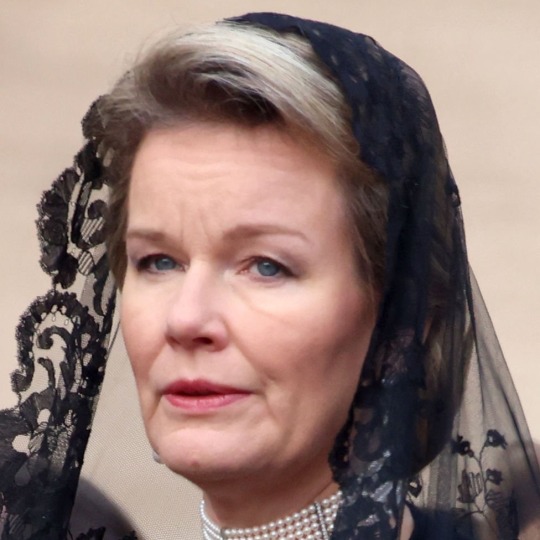


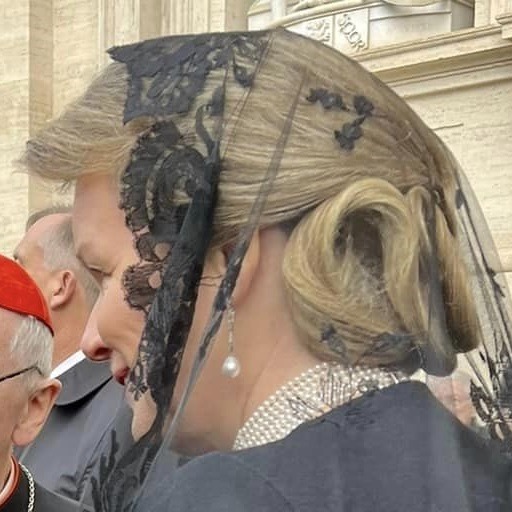
Queen Mathilde of the Belgians at the funeral of Pope Emeritus Benedict XVI at St. Peter's square in Vatican - 05.01.23
15 notes
·
View notes
Photo

January 5, 2023: Bishops and cardinals attend the funeral Mass for the late Emeritus Pope Benedict XVI in St. Peter’s Square at the Vatican. (AP Photo/Ben Curtis)
18 notes
·
View notes
Text
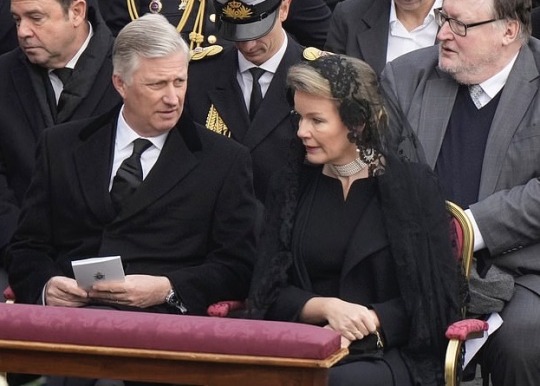
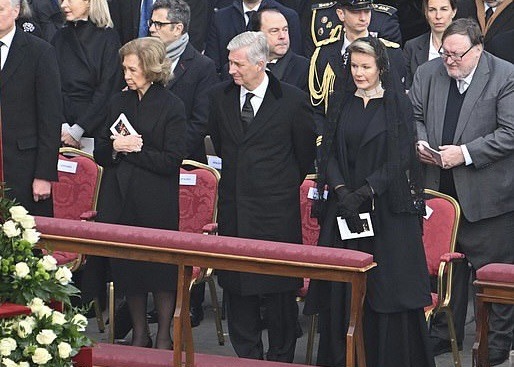
Queen Sofia of Spain and King Philippe and Queen Mathilde of Belgium attend the the funeral of Pope Emeritus Benedict XVI at St Peter's Square, Vatican City | January 5th, 2023
#mathilde is slaying i fear#innapropriate thing to say but oh well#I thought more royals would attend tho#queen sofia#king philippe#queen mathilde#srf#belrf#january 2023
16 notes
·
View notes
Text
Every minute of my 2023 has been spent without electricity so far.
But at least there's nothing going on that would interest a historian like, say, a Papal funeral being presided over by another Pope for the first time in historical memory. Or a rare contested election for Speaker of the House that is not only a disastrous, newsworthy mess for the incoming Republican majority (as I immediately predicted following Election Day in November), but has featured the added bonus of spineless Kevin McCarthy having his ambitions crushed and getting publicly humiliated over-and-over again.
It's a good thing I'm not missing anything like that, right?
I guess I should feel lucky since Pacific Gas & Electric's legendary incompetence and notorious customer "service" hasn't killed anyone this time around. But there's plenty of time for that to still happen if PG&E's repairs continue at their current pace.
Happy New Year!
#California storms#California#Pacific Gas & Electric#PG&E#Politics#Pope Benedict XVI#Papal history#Papal funerals#Death of Pope Benedict XVI#Funeral of Pope Benedict XVI#Speaker of the House#Kevin McCarthy#Congress#House of Representatives#118th Congress
51 notes
·
View notes
Link
17 notes
·
View notes
Text
How Benedict’s death could reshape the Catholic Church
VATICAN CITY — Pope Emeritus Benedict XVI’s death Saturday is an epochal loss for a church that was defined first by his resolute conservatism and later by his radical decision to abdicate power.
The Vatican said that Benedict died at 9:34 a.m. local time and that his body would be placed in St. Peter’s Basilica starting Jan. 2 for a salute “from the faithful.” Pope Francis will preside over his funeral, which will take place Thursday, the Vatican said. Afterward, Benedict’s body will be interred in the grottoes of St. Peter’s Basilica.
Benedict’s decline, after a decade of retirement, had been relatively swift. Francis had put the Catholic world on alert Wednesday, saying his predecessor was “very sick,” and asked for prayers.
“We are moved as we remember him as such a noble person, so kind, and we feel such gratitude in our hearts,” Francis said Saturday evening, in a prayer service at St. Peter’s.
The 95-year-old’s death is likely to reshape the church on several fronts, given that Benedict — who lived longer than anybody who had ever been pope — spanned so many eras, opined on so many subjects and influenced so many of the conservative faithful.
Even in retirement, he had been embraced by traditionalists as the embodiment of their ideals. His death leaves that movement — which at times is vocal and oppositional to Francis — without a figure of comparable clout. His death also, in the short-term, sets the church on a more conventional path, ending a polarizing 10-year period in which the Vatican had two figures wearing white, a pope and an ex-pope. That Francis as a sitting pope will preside over his predecessor’s funeral is another church novelty.
For all Benedict did to shape the church, though, his death does not cause the extraordinary tremors that would have resulted had he remained pontiff. In the coming days, there will be no conclave, no intrigue, no white smoke. Instead, the church will simply have the chance to reflect on an often-controversial figure who girded the institution against the forces of modernization and who presided over some of the rockiest years of the clerical abuse crisis.
It also must decide which ceremonial aspects to afford his funeral and burial, a delicate set of questions that will set precedent for handling the death of a retired pope. Already, one difference emerged, in that the bells at St. Peter were not specifically tolled for Benedict’s death, something that would only happen for the death of a siting pope, a Vatican spokesman said.
Sandwiched between two popes more skilled in outreach to non-Catholics, Benedict was seen as a bookish purist. He first gained prestige as a theologian and academic. He later wrote comprehensive volumes on Jesus. As cardinal, he served as one of John Paul II’s most trusted lieutenants. As pope, he vouched for an economic system that works for the “common good.”
“Christians will be drawing on his theological legacy for centuries,” said Michela Carrozzino, a Rome-based nun who had met Benedict in his retirement.
Tributes to Benedict quickly came pouring in, befitting a figure who was ordained in 1951, made cardinal by Paul VI in 1977 and was seen as a Vatican power broker well before becoming pope. Italian prime Minister Giorgia Meloni called him a “giant of faith and reason.” French President Emmanuel Macron said he worked “with soul and intelligence for a more fraternal world.”
But he was far from universally beloved, including in his home country of Germany, where the church in recent years — battered by scandal — had sought to modernize, reconsidering stances on homosexuality and celibacy, in an approach antithetical to Benedict’s. Wir Sind Kirche, a movement advocating for church reforms, said in a statement about Benedict’s death that he had brought the church to a “theological standstill” with a “climate of fear.”
The last time a pope died — John Paul II, in 2005 — there was a spontaneous outpouring of emotion in Rome, with Catholics flooding into St. Peter’s Square, many weeping. But in the hours after Benedict’s death, the square instead looked as it mostly does: with tourists taking selfies and waiting in lines to enter the basilica.
Across Rome Saturday, the city prepared mostly as normal for New Year’s Eve celebrations on a day with temperatures in the mid-60s. Children shuttled on and off a holiday carousel in Piazza Navona. Couples sipped drinks. The city said it that, after consulting with the Vatican, it would go ahead with an evening concert and other festivities on New Year’s Day, though in some instances there would be a minute of silence.
That difference in reaction, compared with 2005, speaks partly to the fact that Benedict had long been out of the public eye. It also speaks to the damage incurred by the Catholic Church over the past two decades as a result of the sexual abuse crisis and the Vatican’s inadequate response — an upheaval that ensnared Benedict personally.
This past year, a German investigation accused him of wrongdoing in several cases during his time leading the diocese of Munich, from 1977 until 1982. Before becoming pope, he also headed the powerful Vatican body whose purview included abuse cases.
“In our view, Pope Benedict XVI is taking decades of the church’s darkest secrets to his grave with him,” the Survivors Network of Those Abused by Priests said in a statement.
Church historians say the most significant ramification for Catholicism’s future could stem from Benedict’s decision in 2013 to abdicate power, becoming the first pontiff in 600 years to do so. Francis has several times indicated that Benedict created a precedent for future pontiffs, and he said this month that he’d already written a resignation letter — in case of dire health problems.
Francis is 86 and slowed by knee pain but keeps a busy schedule, and there is no indication he might step down soon. But Benedict’s death makes it easier for Francis to consider abdication in the future. One retired pope is less tricky than two.
Benedict’s abdication ultimately looked prescient, given the CEO-like demands of the job and Benedict’s frailty. For years, he had been moving with a walker, barely speaking above a whisper.
Still, the details of how Benedict conducted himself as a retiree proved problematic for the church. He elected not to revert to his given name, Joseph Ratzinger. He remained in the Vatican rather than returning to Germany. He continued dressing in papal white. Despite clearly asserting that Francis was the lone authority figure, he was embraced by conservatives as an alternative power, particularly as Francis sought to modernize the church.
“You can’t have a former pope walking around wearing white and then be surprised when some people say mistakenly that there are two popes,” said Christopher Bellitto, a papal historian at Kean University in New Jersey. “His [death] allows the church to have some serious conversations about how it would handle a future post-papacy. And the answer is, not this way.”
The greatest sense of mourning is likely to be felt among Catholic traditionalists, who saw Benedict as a protector of the eternal truths. He spoke about the dangers of secularism and societies that didn’t allow religious points of view. With pronouncements — and sometimes with purges of liberal theologians — he held the church line on social teachings. His appointment of conservative bishops helped push the American church toward the right. He also eased restrictions on the Latin Mass, an ancient rite adored by traditionalists — a move that was later reversed by Pope Francis.
Traditionalists sometimes have felt under siege in the Francis era. They chafe at his more ambiguous style in relation to hot-button topics, including homosexuality. Francis also has reseeded the College of Cardinals with more like-minded figures, increasing the odds — although hardly guaranteeing — that the next pope has a progressive bent. Traditionalists, in interviews, said their movement would not change substantially without Benedict, because for years he had been more of a symbol than an active participant.
“I think the traditionalists who feel isolated in the church right now should also remember that Pope Benedict stood for their unity with the whole church and not their isolation,” said Chad Pecknold, a professor of systematic theology at Catholic University in Washington. “So I think the traditionalists should not retreat into sadness at the death of Benedict.”
His nuanced, scholarly way of speaking had long fallen out of vogue with the most vocal members of the faith’s conservative wing, Vincent Miller, a professor of Catholic theology at the University of Dayton.
“He never uttered a soundbite in his life,” Miller said of Benedict. “He thought in paragraphs.”
For years, there had been intrigue about the relationship between Francis and Benedict, given their stylistic differences. Although their admirers were polarized, Francis routinely cited his predecessor and spoke warmly about him. Benedict said there was only “one pope” — Francis.
Saturday, leading a prayer service at a packed St. Peter’s Basilica — scheduled before Benedict’s death — Francis devoted only a short passage to the retired pope, moving on to other themes, such as the nature of kindness and the way to treat others.
After the service, Francis, in a wheelchair, was guided into St. Peter’s Square, where there were no signs of mourning. The Christmas tree was lit. The Swiss Guard band played festive music. Francis waved to adoring crowds.
19 notes
·
View notes
Text
Vatican shares first photos of Benedict XVI after death

By Hannah Brockhaus
1 January 2023 / 05:28 am
The Vatican on Sunday shared the first photos of Pope Emeritus Benedict XVI since his death on December 31.
Benedict’s mortal remains have been laid in the chapel of the Mater Ecclesiae Monastery, the pope emeritus’ home after his resignation, until they will be brought to St. Peter’s Basilica for public viewing on January 2.
Benedict XVI is dressed in red and gold vestments and wearing a gold miter.
Popes are traditionally dressed in red for their funerals.
The former pope has his rosary in his folded hands.
The photos, the first of the deceased Benedict to be released, were taken on the morning of January 1.
Benedict XVI will lie in state in St. Peter’s Basilica from January 2-4. His funeral Mass will take place in the Vatican square on the morning of January 5.
"The funeral will be solemn but sober," Vatican spokesman Matteo Bruni said.
After the funeral Mass, Benedict XVI’s remains will be entombed in the Vatican crypt under St. Peter’s Basilica.
Bruni told journalists on January 1 that some of the people closest to Benedict, likely those who worked for him in his household, will view the body at the Vatican monastery on Sunday.




The Vatican has released photographs of the body of Pope Emeritus Benedict XVI, who died on 31 December 2022, at age 95. | Vatican Media
#Pope Emeritus Benedict XVI#Pope Benedict XVI#Joseph Aloisius Ratzinger#Mater Ecclesiae Monastery#St. Peter’s Basilica#Vatican
8 notes
·
View notes
Text
This may set the stage for how possible futuer funerals for Pope Emeritus may occur.
#my post#Pope Benedict XVI#Pope Emeritus Benedict XVI#Pope Emeritus#Funeral#Pope Benedict's funeral#Yahoo news
0 notes